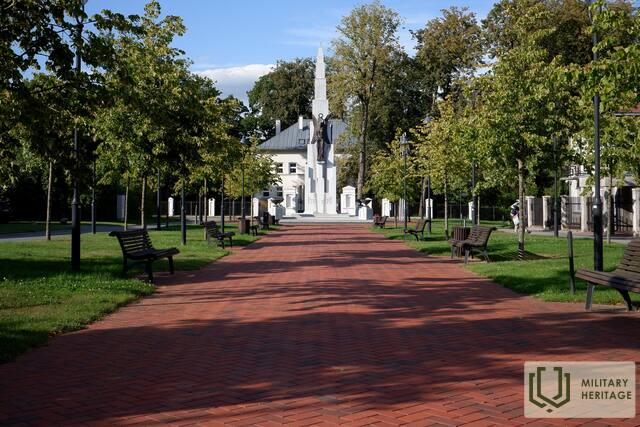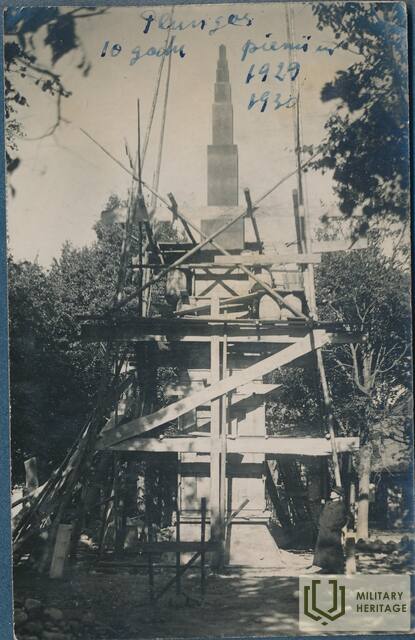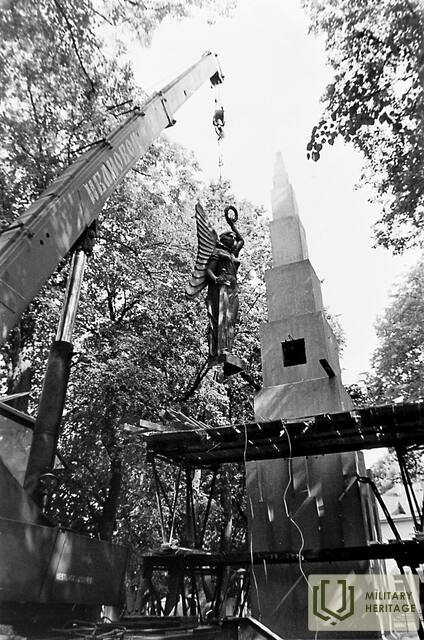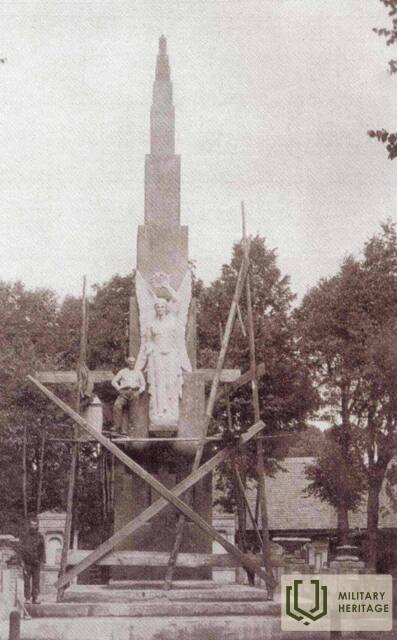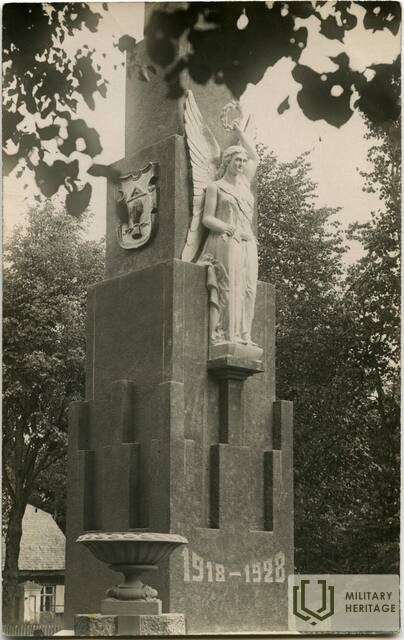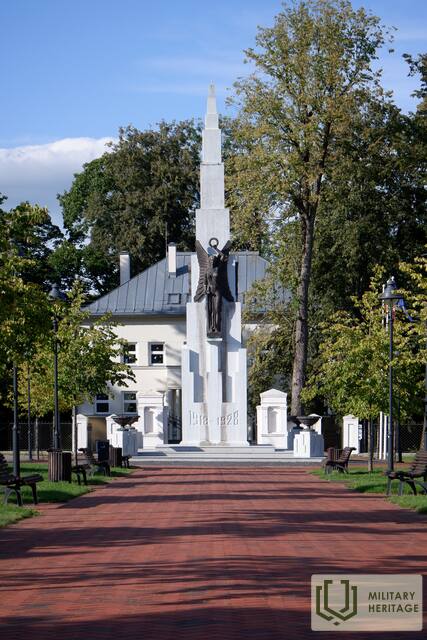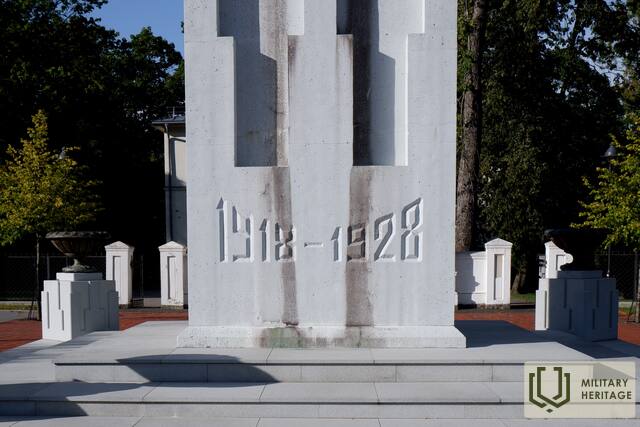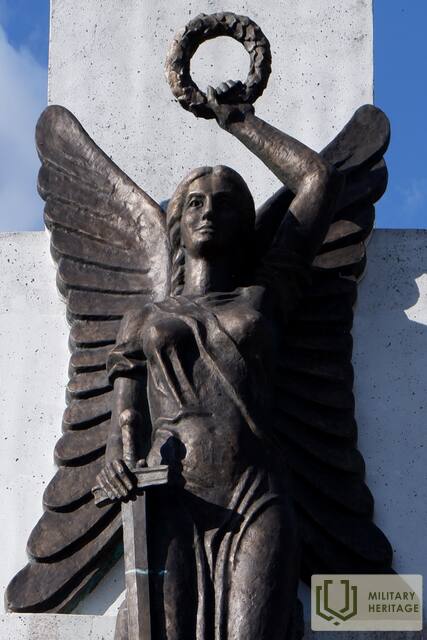Freedom Monument in Plungė Memorial site

In around 1928, on the occasion of the tenth anniversary of the proclamation of the independence of the Republic of Lithuania, the construction of the Freedom Monument was started in Plungė, on Laisvės Avenue, with the monument built in accordance with the design by the artist Kleinauskas. The project was completed in 1931 and was recognised as the highest (18 m) Freedom Monument in Žemaitija.
The idea of the monument did not satisfy the Catholic community of the city, who felt that the main figure of the monument – a plaster sculpture of a winged angel holding a sword and a crown – looked too vulgar and bare. Therefore, the original idea of erecting the Freedom Monument in front of the church was rejected and it was installed on Laisvės Avenue. There is a story that the sculpture has been stoned by the townspeople. The city authorities did not like the monument either – Independence Day celebrations were held at the statue of St Florian, ignoring the Freedom Monument.
Finally, in around 1936, the ruined sculpture was dismantled, and in around 1950–1953, the Soviet occupation authorities blew up the remains of the monument in order to combat the expression of freedom ideas. In 1992, the monument was restored and consecrated. The new sculpture and coat of arms were cast in bronze. The author of the restored monument is sculptor Vilimas Ketvirtis. The sculpture of the angel was cast in St Petersburg, while the coats of arms of Plungė – in Kaunas.
Used sources and references:
Related timeline
Related stories
The Scandalous Freedom Monument
The Freedom Monument, built in Plungė in the late 1920s, caused a scandal in the religious community due to the figure of a naked woman, which was supposed to symbolize Freedom, but became the subject of endless controversy - both on ethical and quality issues.




